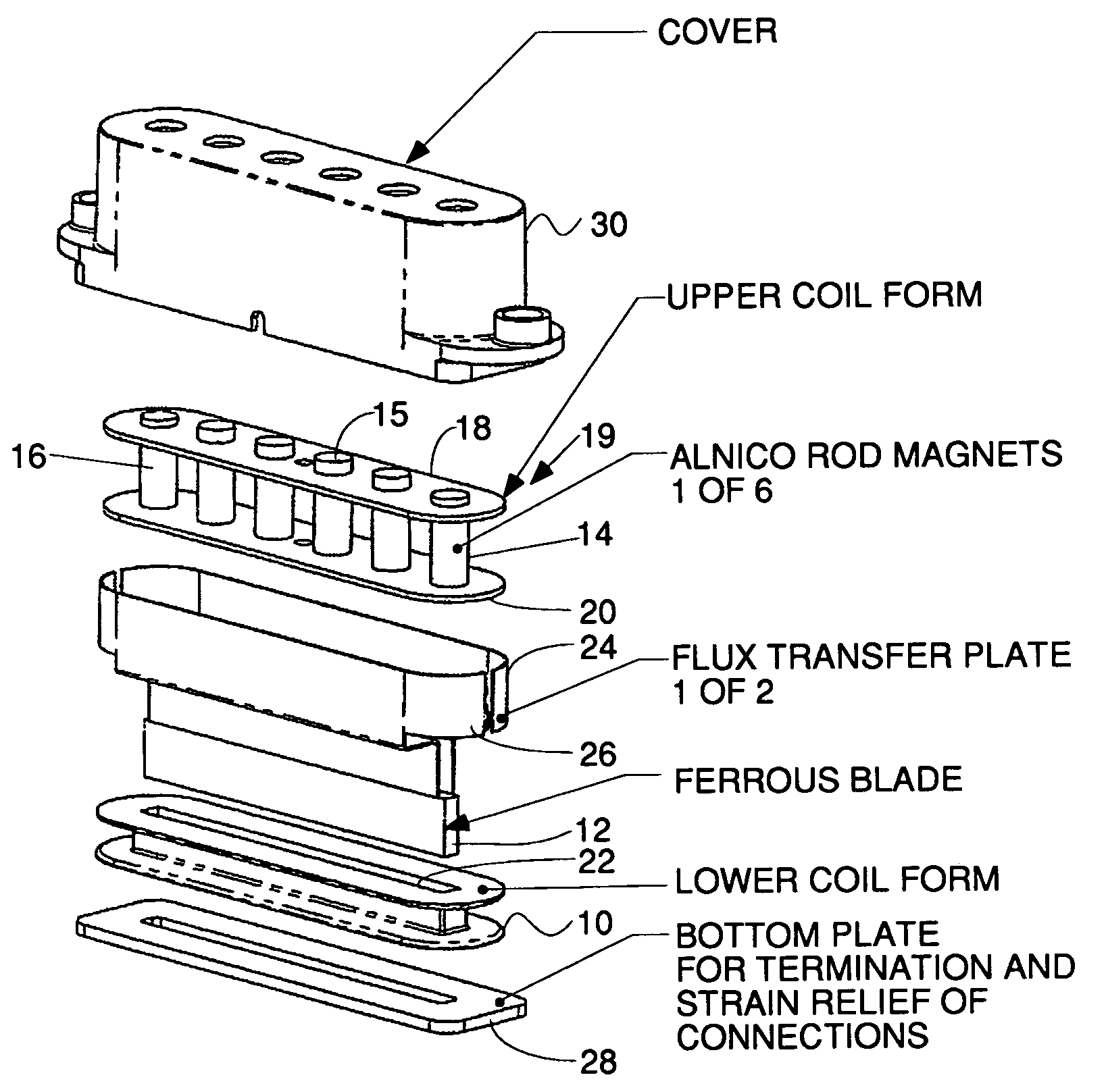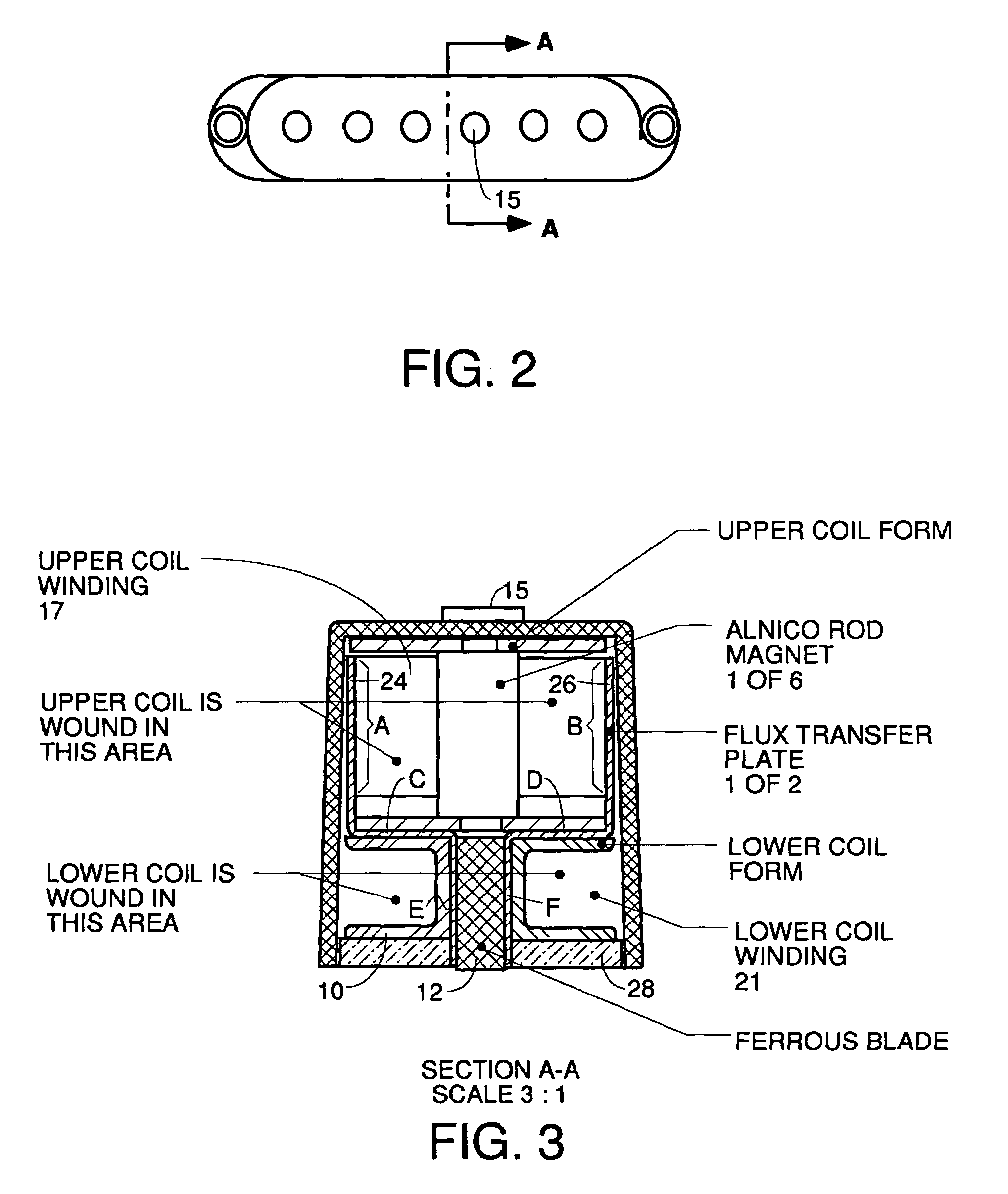Compact hum-canceling musical instrument pickup with improved tonal response
a musical instrument and pickup technology, applied in the field of compact hum-canceling musical instrument pickups with improved tonal response, can solve the problems of degrading the quality of the resulting composite signal, affecting the quality of the composite signal, so as to minimize the amount of noise signal picked and maximize the amount of noise signal generated
- Summary
- Abstract
- Description
- Claims
- Application Information
AI Technical Summary
Benefits of technology
Problems solved by technology
Method used
Image
Examples
Embodiment Construction
[0034]Referring jointly to FIGS. 1, 2 and 3, the preferred embodiment of a two-coil pickup for a stringed instrument will be described. FIG. 1 is an exploded view of the pieces of the preferred form of a two-coil pickup according to the teachings of the invention. FIG. 2 is a top view of the pickup of FIG. 1. FIG. 3 is a cross-sectional view of the pickup of FIG. 1 taken along the section line A—A in FIG. 2.
[0035]A lower coil form 10 serves as a bobbin around which a lower winding (not shown) is wound to form the lower coil. The lower coil form 10 has a slot 22 formed therein in which a ferrous blade 12 is inserted when the pickup is assembled. The lower coil form 10 can be made of injection molded plastic, glass reinforced nylon or any other non ferrous or ferrous material. The preferred material for the lower coil form 10 is glass reinforced nylon which is a form of injection molded plastic. The lower coil form 10 does not have to be non ferrous, and it can be made of other ferrou...
PUM
 Login to View More
Login to View More Abstract
Description
Claims
Application Information
 Login to View More
Login to View More - R&D
- Intellectual Property
- Life Sciences
- Materials
- Tech Scout
- Unparalleled Data Quality
- Higher Quality Content
- 60% Fewer Hallucinations
Browse by: Latest US Patents, China's latest patents, Technical Efficacy Thesaurus, Application Domain, Technology Topic, Popular Technical Reports.
© 2025 PatSnap. All rights reserved.Legal|Privacy policy|Modern Slavery Act Transparency Statement|Sitemap|About US| Contact US: help@patsnap.com



